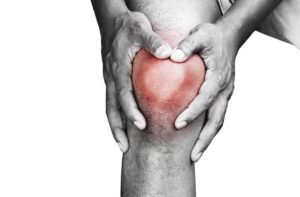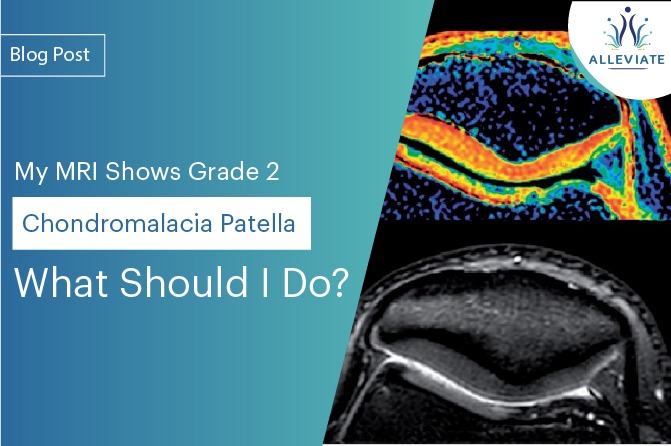Introduction
Receiving a diagnosis of Grade 2 Chondromalacia Patella can be disconcerting, but it’s essential to understand that this condition is treatable. Chondromalacia Patella, also known as patellofemoral syndrome, is a common knee problem that primarily affects the patellar (knee cap) and femoral (thigh bone) joint. In this comprehensive article, we will delve into the pathogenesis of Grade 2 Chondromalacia Patella, its symptoms, and explore a promising treatment approach known as Comprehensive Platelet Rich Plasma (PRP) + Prolotherapy.
Pathogenesis of Grade 2 Chondromalacia Patella
Grade 2 Chondromalacia Patella refers to the degeneration of the cartilage on the undersurface of the patella. This condition often results from biomechanical issues, with weakness in the medial structures of the knee playing a crucial role.
Medial Structures Weakness
The medial structures of the knee include the medial patellofemoral ligament (MPFL) and the vastus medialis obliquus (VMO) muscle. When these structures are weak or dysfunctional, they fail to provide adequate support to the patella, leading to increased pressure on the lateral (outer) side of the knee joint. This imbalance causes abnormal tracking of the patella, resulting in the degeneration of its cartilage.


Medial supports of the knee
The MPFL arises between the adductor tubercle and medial epicondyle then runs forward just deep to the distal VMO to attach to the superior two-thirds of the medial patellar margin.
- MPFL : The MPFL is a critical ligament that helps to stabilize the patella and prevent lateral dislocation. Weakness or damage to the MPFL can contribute to patellar malalignment.
- VMO : The VMO muscle is part of the quadriceps muscle group and plays a significant role in controlling the movement and position of the patella. Weakness in the VMO can lead to improper patellar tracking and increased stress on the cartilage.
Symptoms of Grade 2 Chondromalacia Patella
Grade 2 Chondromalacia Patella can present with a range of symptoms, including:
- Anterior Knee Pain : Patients often experience pain in the front of the knee, particularly during activities that involve bending the knee, such as climbing stairs, kneeling, or squatting.
- Crepitus : Some individuals may notice a grinding or cracking sensation when moving the knee.
- Swelling : Swelling around the knee joint can occur due to inflammation associated with the cartilage degeneration.
- Instability : A feeling of knee instability or giving way can result from patellar malalignment.
- Stiffness : Patients may experience stiffness in the knee, especially after prolonged periods of inactivity.


Treatment with Comprehensive PRP + Prolotherapy
Comprehensive Platelet Rich Plasma (PRP) + Prolotherapy is an innovative and minimally invasive treatment approach that targets the underlying issues of Grade 2 Chondromalacia Patella. This treatment aims to strengthen the medial support structures of the knee, including the MPFL and VMO, to improve patellar alignment and reduce pain.
Platelet Rich Plasma (PRP)
PRP is derived from the patient’s blood and contains a concentrated dose of platelets, growth factors, and cytokines. It is known for its regenerative properties. In the context of Chondromalacia Patella, PRP can be used to stimulate the healing and regeneration of damaged cartilage. The procedure involves:
- Blood Collection : A small sample of the patient’s blood is taken.
- Centrifugation : The blood is spun in a centrifuge to separate the platelets and growth factors.
- Injection : The PRP solution is then injected into the affected area of the knee, targeting the damaged cartilage.
Prolotherapy
Prolotherapy, or regenerative injection therapy, involves the injection of a solution (usually dextrose) into the affected area. The solution irritates the tissues, leading to an inflammatory response that stimulates the body’s natural healing processes. In the case of Chondromalacia Patella, prolotherapy can be used to strengthen the weakened medial structures, including the MPFL and VMO.
- Injection : The prolotherapy solution is precisely injected into the areas of weakness, such as the MPFL and VMO insertion points.
- Healing Response : The injection promotes tissue repair and remodeling, strengthening the medial support structures.


Benefits of Comprehensive PRP + Prolotherapy
- Promotes tissue regeneration and repair.
- Improves patellar tracking and alignment.
- Reduces pain and inflammation.
- Minimally invasive with minimal downtime.
- Addresses the root causes of Chondromalacia Patella.
- Can be used as an alternative to surgical interventions.
Conclusion
A diagnosis of Grade 2 Chondromalacia Patella does not necessarily mean you have to live with chronic knee pain. Understanding the pathogenesis of the condition and recognizing the importance of the medial structures in maintaining knee joint stability can guide treatment decisions. Comprehensive Platelet Rich Plasma + Prolotherapy offers a promising and non-surgical approach to strengthen these structures, alleviate pain, and improve the quality of life for individuals living with Chondromalacia Patella. If you suspect you have this condition, consult with our Experts AT ALLEVIATE PAIN CLINIC to explore your treatment options and determine if Comprehensive PRP + Prolotherapy is suitable for you. Remember, effective treatment can help you regain pain-free mobility and enjoy an active lifestyle once again.
References
- Elias DA, White LM, Fithian DC. “Evaluating the Patellofemoral Joint: From the History and Physical Examination to Diagnostic Imaging. Sports Health. 2011 Nov;3(6):438-47.
- Philippot R, Boyer B, Testa R, Farizon F, Moyen B. The Role of the Medial Ligamentous Structures on Patellar Tracking During Knee Flexion.\” Knee Surg Sports Traumatol Arthrosc. 2012 Jul;20(7):1323-30.
- Lieb FJ, Perry J. Quadriceps Function. An Anatomical and Mechanical Study Using Amputated Limbs. J Bone Joint Surg Am. 1968 Sep;50(6):1535-48.
- Image taken from @article{zgen2017ANM, title={A new MRI grading system for chondromalacia patellae}, author={Ali {O}zgen and Neslihan Taşdelen and Zeynep Firat}, journal={Acta Radiologica}, year={2017}, volume={58}, pages={456 – 463}, url {https://api.semanticscholar.org/CorpusID:23601698}



